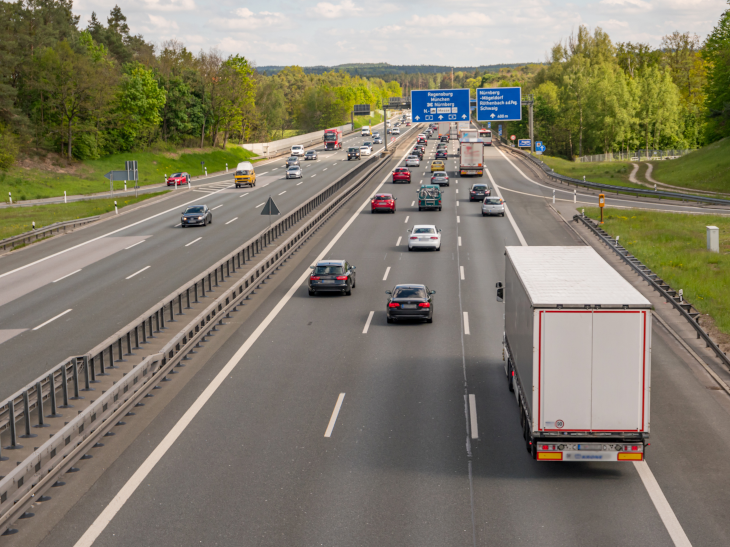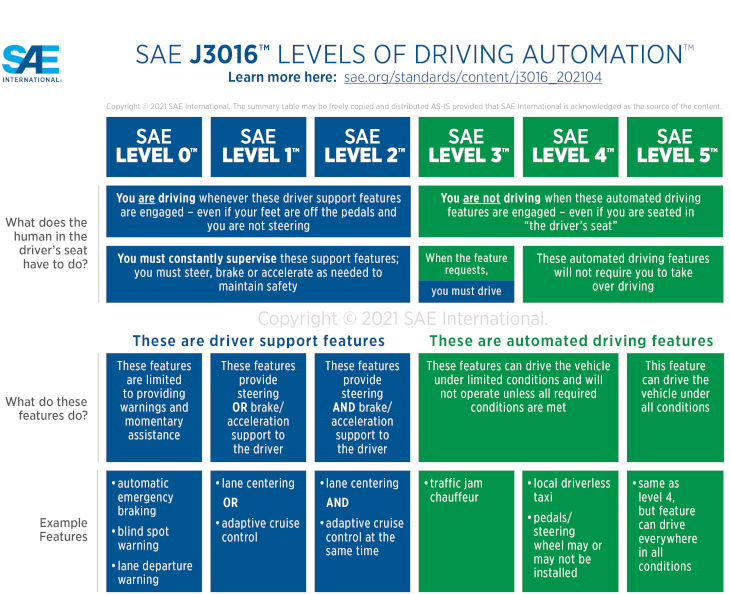What sounded like distant dreams of the future just a few years ago is becoming a reality. The first personally owned cars that can drive all by themselves can chauffeur their passengers on German motorways. Since the summer of 2021, this is permitted by German law – although still with limitations to start with. First this is only allowed at a speed up to 60 km/h and only on motorways. Nevertheless, it is becoming apparent that the development of autonomous driving will advance significantly in the near future. This is supported by HD maps. The HD Live Map from HERE Technologies, one of the founding member of the NDS Association, is an integral part of the new Drive Pilot from Mercedes-Benz, the first company to take full responsibility for the safety of its drive automation solution in clearly defined congestion situations.
With the new law on automated driving, the legal framework has been created for autonomous motor vehicles (up to SAE level 4) to drive in defined operating areas on public roads. Germany is thus bringing drive automation into personal, everyday use for the first time. The goal is to bring vehicles with automated driving functions into regular operation by 2022. The operation of automated driving vehicles will be made possible for a larger number of operational scenarios. The law regulates, for example, technical requirements for the construction, condition, and equipment of motor vehicles with autonomous driving functions, but also requirements regarding the duties of the persons involved. In addition, there are regulations on data processing during the operation of motor vehicles with automated driving functions.
NDS Association welcomes innovation boost from new law
Innovations can be slow to catch on in Germany but when it comes to automated driving, the car nation has put itself onto the pole position. The new regulation on autonomous driving is considered particularly progressive. Germany is the only country that allows Level 3 and even Level 4 systems under certain conditions. In the USA, so far only individual states allow robo-taxis in selected areas. In China, too, automated driving is only possible in selected metropolitan areas. In order to make the most of the great potential of automated and connected driving, the German government wants to push research and development and thus make the mobility of the future more versatile, safer, environmentally friendly, and user-oriented. The NDS Association welcomes this development.

Assisted driving, partially automated driving, highly automated driving, fully automated driving and, in a final step, autonomous driving are the five different levels everyone talks about. Strictly speaking, there are three levels: assisted driving, automated driving and autonomous driving. We are all long familiar with Level 2 applications such as lane keeping assistance or adaptive cruise control. But now at Level 3 automated driving we can take our hands off the wheel and our eyes off the road for the first time.
Highways are ideal for initial level 3 and 4 projects. Since 2021, there has been a design specification for the Autobahn Congestion Pilot; the Mercedes S-Class is the first to launch the application. Up to speeds of 60 km/h, full automated driving on the highway is now possible. For some time, the driver is allowed to turn to other tasks, but must intervene immediately when the system warns. With the help of an infrared stereo camera in the driver display, the Mercedes Drive Pilot ensures that the driver takes over again. If the going gets tough because the driver is not taking over, the vehicle will pull over carefully and stop at the right-hand edge of the lane and it will switch on the hazard warning lights.

Reliable information about road network
NDS Association member HERE Technologies supports Mercedes-Benz’s new Drive Pilot, the first commercially available SAE (Society of Automotive Engineers) Level 3 automated driving system. Using the HERE HD Live Map, the vehicle system receives reliable information about the road network. The activated Drive Pilot controls the vehicle speed as well as the distance to the vehicle in front and guides the car safely in its lane without the driver having to intervene. The cloud-based HERE HD Live Map provides the system with detailed data about the three-dimensional road network. In combination with the inputs from the vehicle sensors, the map data is used by the Drive Pilot to maneuver a vehicle on the public road network. The Drive Pilot’s ultra-precise location system goes far beyond the usual GPS system.
The HERE HD Live Map in NDS consists of several data layers that provide the car with the information to understand where it is and what lies ahead. For example, a vehicle can proactively adapt to changing road conditions and adjust its speed ahead of an impending lane closure. This is made possible by HERE’s advanced mapping technology, which results both in the high precision and high accuracy of the HD Live Map.
Mercedes-Benz will make its Level 3 Drive Pilot feature available in the new S-Class soon. Over time, the system will be integrated into other Mercedes-Benz models. The Drive Pilot will initially only be available in Germany, as the legal basis for Level 3 systems was created here in 2017. The introduction in other countries of Europe, the USA, and in China will take place step by step as soon as the legal framework conditions are also in place there.
Back to news →